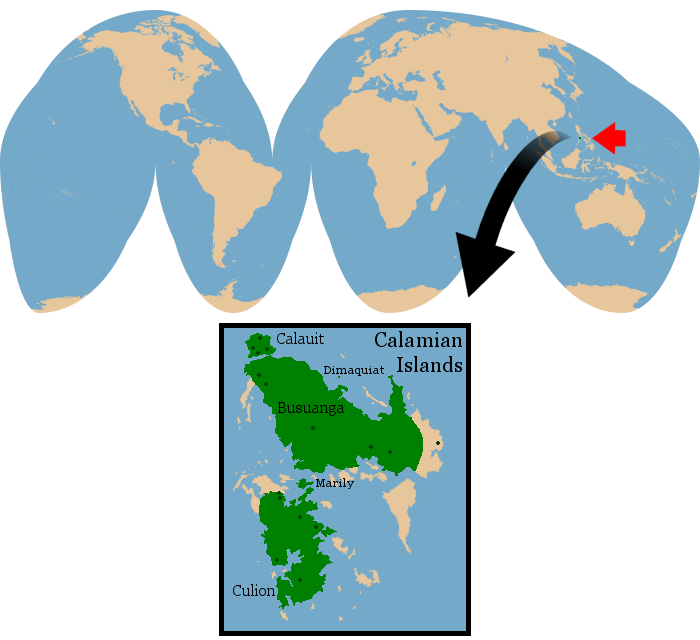Kingdom: |
Animalia Chordata Mammalia Artiodactyla Ruminantia Cervidae Cervinae Cervini Axis |
Common name:
Scientific name:
Other names: |
Calamian deer
Axis calamianensis
Calamian hog deer, Cerf de Culion, Cerf de Calamiane, Cerf-cochon Calamien, Calamian-Hirsch, Calamian-Schweinhirsch, Pilandoc, Usa |
Physical Characteristics
- Head and body length: 100-115 cm
- Shoulder height: 60-70 cm
- Tail length: 15 cm
- Adult weight: 23-29 kg (females), 32-40 kg (males)
- Shoulder height: 60-70 cm
The Calamian deer has a stocky build with short legs and slightly elevated hindquarters. The overall body color is uniform golden-brown with paler underparts. The legs are dark brown (almost black in some animals), and a dark dorsal stripe extends from the shoulders to the base of the bushy tail. The lips are white, bordered by dark bars. A small pale 'bib' is found on the upper throat. The ears are slightly rounded and are predominantly white on their inner surfaces. Only males bear antlers, which have three prongs and grow from prominent pedicels on the forehead. Average antler length is 23.5 cm, with lengths of up to 39 cm reported.
- Similar species
- Easily identified by its distribution, the Calamian deer is similar to the closely-related Bawean deer (Axis kuhlii) and hog deer (Axis porcinus). Distinguishing characteristics are not absolute, but include longer, darkly-colored legs and the lack of dark hair on the forehead.
Reproduction and Development
- Gestation period:
220-225 days.
- Litter size: 1.
- Weaning: 4-5 months.
- Sexual maturity: 12-17 months.
- Life span: Up to 18 years in captivity.
- Litter size: 1.
Breeding occurs year-round, with a reported peak in births in June (the beginning of the rainy season). Young are unspotted, averaging 1.27 kg at birth (average weight for male fawns: 1.625 kg; females: 1.03 kg). Fawns are "tucked" in sheltered hiding spots until they are fully mobile and can keep up with their mothers. Young start nibbling on vegetation around one month of age. Antler development in males begins at 8-9 months. The antlers are shed and regrown in a 9-10 month cycle, so males in various states of antler development are found throughout the year.
Ecology and Behavior
- Family group:
Small herds of 7-14 animals, occasionally up to 27 individuals.
- Diet: Grasses, herbs, leaves.
- Main Predators: Adults have no predators besides humans.
- Diet: Grasses, herbs, leaves.
Habitat and Distribution
Endemic to grasslands and open forests on the Calamian Islands (specifically Busuanga, Calauit, and Culion) in the Philippines, with a range of approcimately 2,591 km2. The species has been introduced to several smaller islets, but is only believed to persist on two (Marily and Dimaquiat). The approximate range is depicted in the map below.

Conservation Status
- IUCN Red List:
Endangered (2015).
- CITES Listing: Appendix I (2017).
- Threats: Hunting, habitat loss due to agriculture and expanding settlement
- CITES Listing: Appendix I (2017).
There have been several dramatic fluctuations in population numbers since the 1950s , dropping to a low of perhaps 450-900 deer in 1975. In 1994, over 1,000 individuals were thought to inhabit the island Calauit alone, but in 1996 the same population was estimated at only 550 deer. No estimates are available for the other islands.







